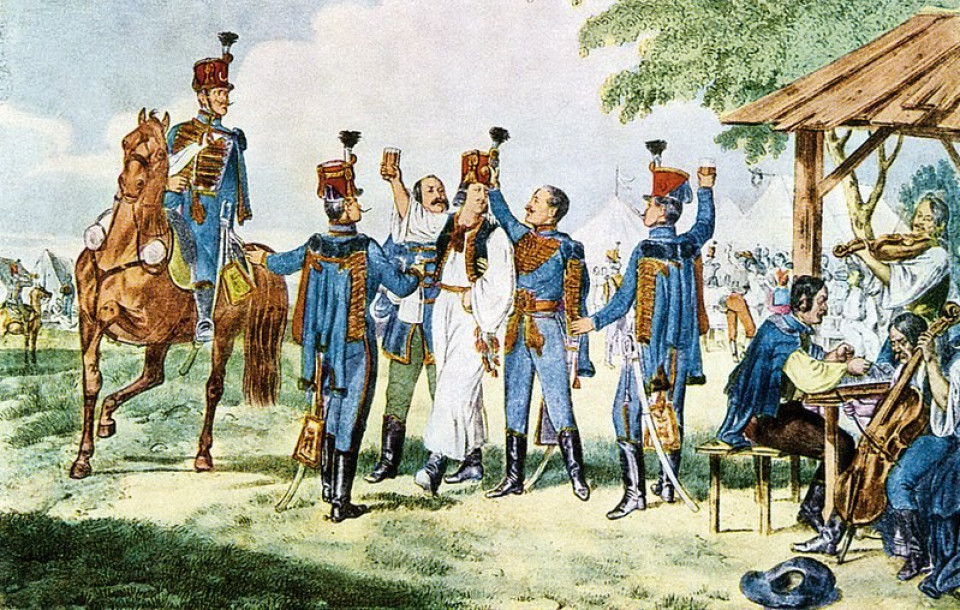Originating in the eighteenth century, Verbunkos (derived from a German term meaning to advertise or recruit), is an 18th-century Hungarian dance and music genre. This type of music was initially used in the induction of recruits into the Austro-Hungarian army. The dance music was used to illustrate a soldier’s work to consist of unlimited fulfilment and enjoyment.
The Verbunkos is typically in a pair of sections: lassu, a slow section of music involving a dotted rhythm, and friss, a fast-paced section of music with vituosic running-note passages. In some cases, this slow-fast pair alternates at greater length. The character of the Verbunkos derives from the military march tempo.
Zoltan Kodaly’s composition, Dances of Galanta demonstrates a lassu orchestral introduction, transforming into a fast-paced friss and concluding with four swift dances. Dances of Galanta combines historic Hungarian folk elements at the forefront of the piece with century-old melodies and source material to exhibit a beautiful display of Verbunkos.
Dances of Galanta will be performed as part of our Song and Dance concert, taking place:
